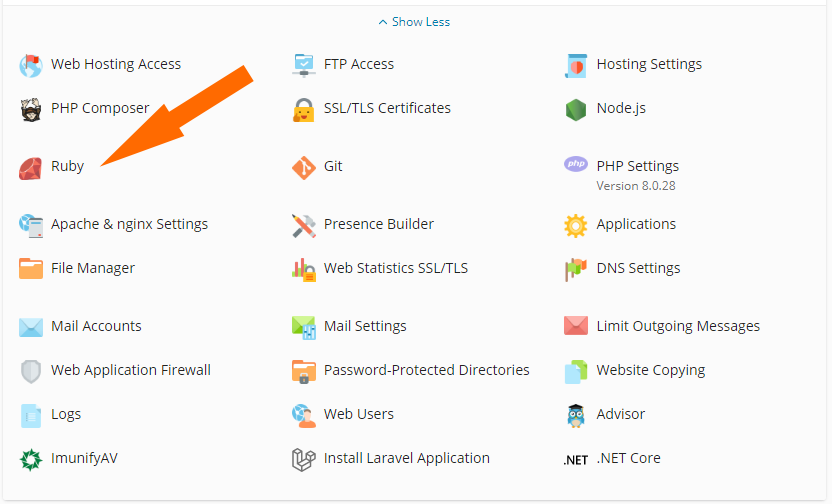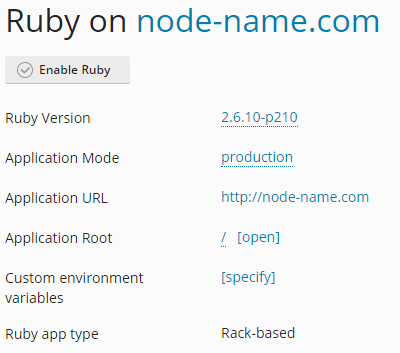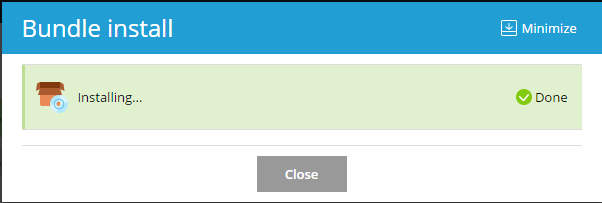Ruby — dynamic, reflective, interpreted, high-level programming language. The Business and Business+ plans include support for Ruby applications. Support for applications on the Ruby platform.
The following versions are available for installation and configuration:
- 2.6.10-p210
- 2.6.9-p207
- 2.6.3-p62
- 2.5.5-p157
- 2.4.6-p354
- 2.3.8-p459
Application mode selection:
- production
- development
Choosing the application root folder and the ability to set your environment variables. Ruby app type. Panel automatically detects if the application was built using the Ruby on Rails framework – in this case, it will have the Ruby on Rails application type. Otherwise, the Rake application type will be displayed.

Application launch options settings:

An application may contain a Gemfile listing the gems and their versions required by the application. In this case, for application deployment, you need to install these gems using the Bundler utility. Go to Websites&Domains, click Ruby and then click Bundle install.

All the gems will be installed to the vendor/bundle directory in the application structure.

After the progress dialog shows that the installation has completed successfully, the application will be deployed to your web site and restarted.
Note: If you need to execute Rake tasks with your application via the command line interface and want to use the same Ruby version and the same gems set as your application has, use the bundle command. For example: RAILS_ENV=production bundle exec rake db:migrate.

